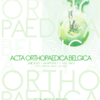Is the level of vitamin D deficiency correlated with the severity and bilaterality in slipped capital femoral epiphysis? A case series study
Published online: Aug 23 2022
Abstract
The aim of the study is to find the correlation between vitamin D level and the severity of slippage and bilateral development in slipped capital femoral epiphysis (SCFE) cases if any. Thirty-nine patients with moderate-severe stable SCFE were evaluated regarding their vitamin D level and to which extent the severity of vitamin D deficiency, if present, can be correlated with the severity and bilaterality of the slip. Vitamin D serum level was assessed pre- operatively for all patients. In case of deficiency, the patient underwent in situ pinning unless performed before his/her presentation. Alongside, he/she received a vitamin D course until correction prior to the definitive surgery (Imhäuser osteotomy with osteochondroplasty) 6-12 weeks after. Thereafter, osteotomy healing and physis closure were monitored radiologically. Results show that all patients but one had vitamin D deficiency, with an average of 14.39 ng/mL, necessitating vitamin D therapy before proceeding to the definitive surgery. No correlation existed between vitamin D level and Southwick angle severity with a p-value of 0.85. A negative correlation existed between vitamin D level and bilaterality, but not statistically significant (p-value 0.192). Patients’ osteotomy healing was uneventful, and physeal closure was achieved in all the cases that had in situ pinning. We conclude that the severity of Vitamin D deficiency could be linked to the bilateral development of SCFE but not the severity of slippage. Treatment of Vitamin D deficiency facilitates physeal closure.
